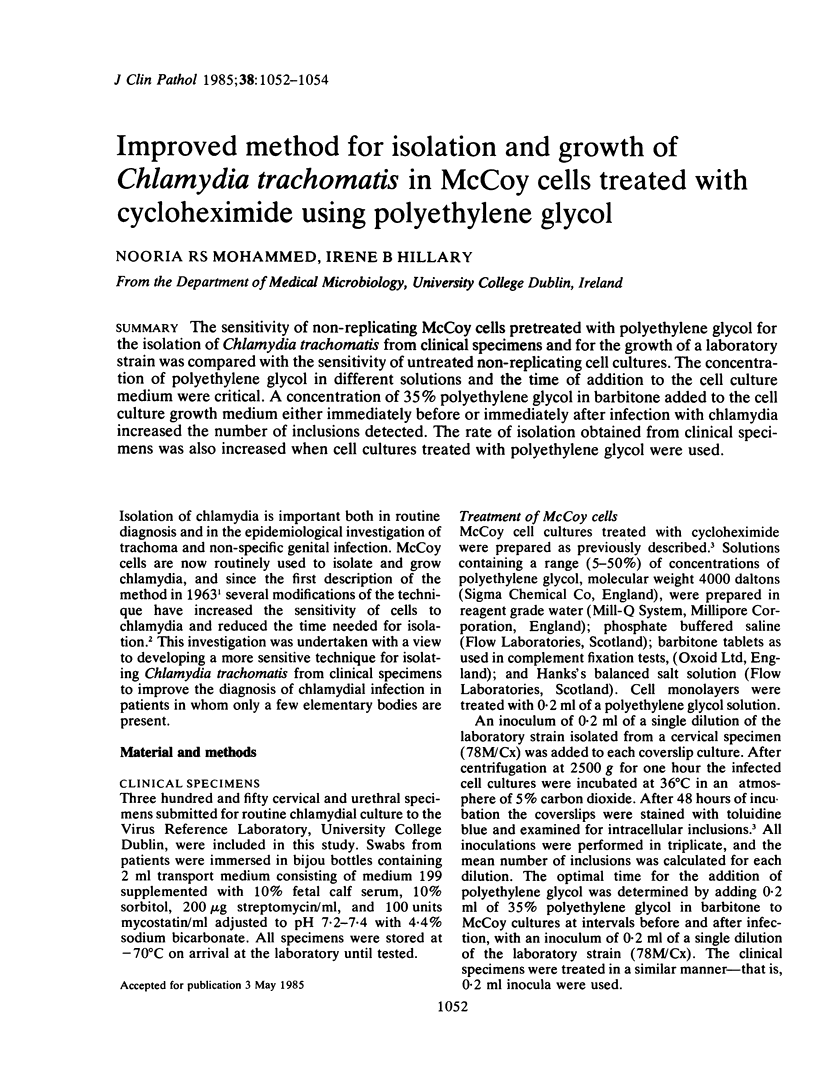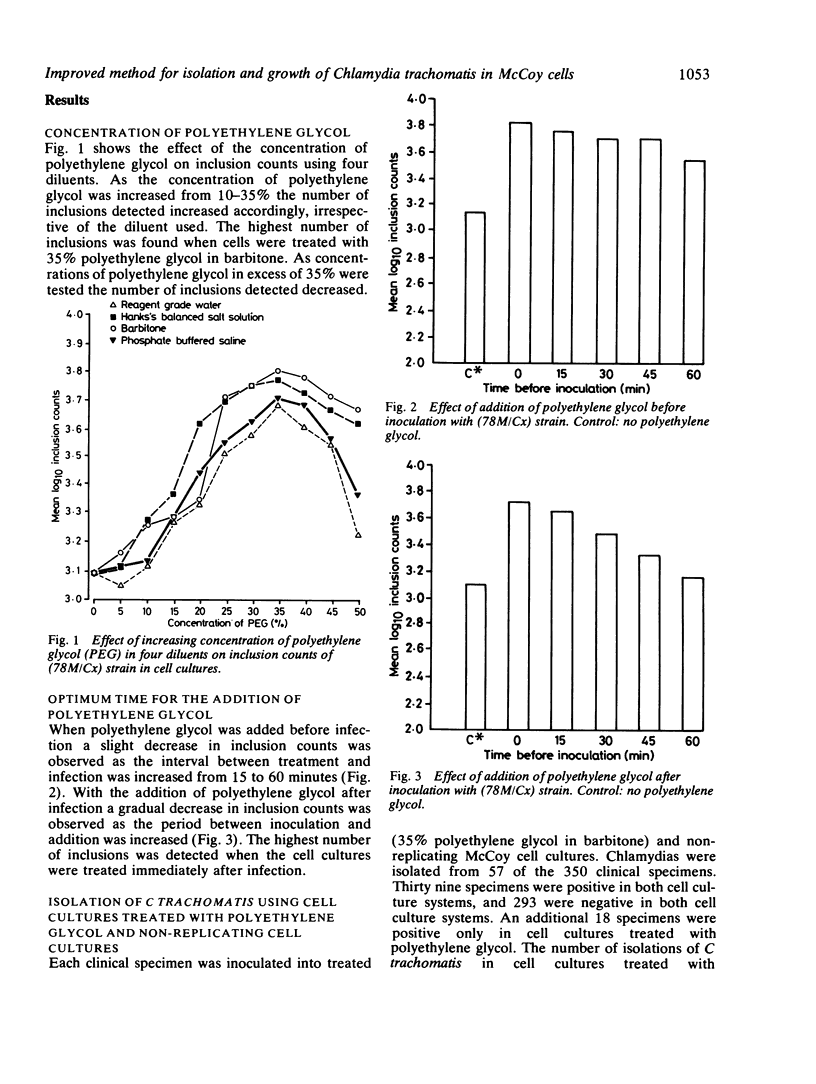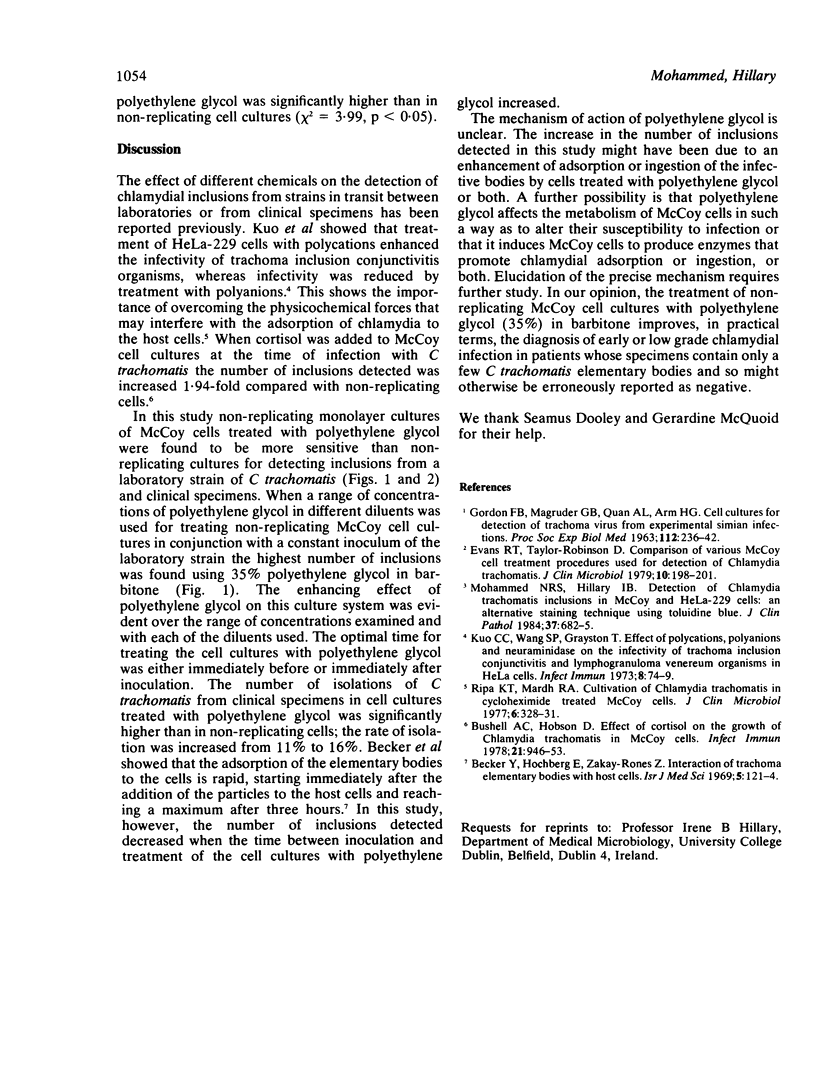Abstract
The sensitivity of non-replicating McCoy cells pretreated with polyethylene glycol for the isolation of Chlamydia trachomatis from clinical specimens and for the growth of a laboratory strain was compared with the sensitivity of untreated non-replicating cell cultures. The concentration of polyethylene glycol in different solutions and the time of addition to the cell culture medium were critical. A concentration of 35% polyethylene glycol in barbitone added to the cell culture growth medium either immediately before or immediately after infection with chlamydia increased the number of inclusions detected. The rate of isolation obtained from clinical specimens was also increased when cell cultures treated with polyethylene glycol were used.
Full text
PDF


Selected References
These references are in PubMed. This may not be the complete list of references from this article.
- Becker Y., Hochberg E., Zakay-Rones Z. Interaction of trachoma elementary bodies with host cells. Isr J Med Sci. 1969 Jan-Feb;5(1):121–124. [PubMed] [Google Scholar]
- Bushell A. C., Hobson D. Effect of cortisol on the growth of Chlamydia trachomatis in McCoy cells. Infect Immun. 1978 Sep;21(3):946–953. doi: 10.1128/iai.21.3.946-953.1978. [DOI] [PMC free article] [PubMed] [Google Scholar]
- Evans R. T., Taylor-Robinson D. Comparison of various McCoy cell treatment procedures used for detection of Chlamydia trachomatis. J Clin Microbiol. 1979 Aug;10(2):198–201. doi: 10.1128/jcm.10.2.198-201.1979. [DOI] [PMC free article] [PubMed] [Google Scholar]
- GORDON F. B., MAGRUDER G. B., QUAN A. L., ARM H. G. Cell cultures for detection of trachoma virus from experimental simian infections. Proc Soc Exp Biol Med. 1963 Jan;112:236–242. doi: 10.3181/00379727-112-28004. [DOI] [PubMed] [Google Scholar]
- Kuo C. C., Wang S. P., Grayston J. T. Effect of polycations, polyanions and neuraminidase on the infectivity of trachoma-inclusin conjunctivitis and lymphogranuloma venereum organisms HeLa cells: sialic acid residues as possible receptors for trachoma-inclusion conjunction. Infect Immun. 1973 Jul;8(1):74–79. doi: 10.1128/iai.8.1.74-79.1973. [DOI] [PMC free article] [PubMed] [Google Scholar]
- Mohammed N. R., Hillary I. B. Detection of Chlamydia trachomatis inclusions in McCoy and HeLa-229 cells: an alternative staining technique using toluidine blue. J Clin Pathol. 1984 Jun;37(6):682–685. doi: 10.1136/jcp.37.6.682. [DOI] [PMC free article] [PubMed] [Google Scholar]
- Ripa K. T., Mårdh P. A. Cultivation of Chlamydia trachomatis in cycloheximide-treated mccoy cells. J Clin Microbiol. 1977 Oct;6(4):328–331. doi: 10.1128/jcm.6.4.328-331.1977. [DOI] [PMC free article] [PubMed] [Google Scholar]


